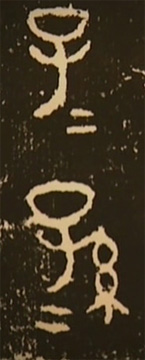2023 update: I'm excited to say that we've recently partnered with Outlier Linguistics, and they're well known for exploring the nitty-gritty details of characters — just like we do in this post. If you find this content interesting, then we strongly recommend checking out their Kanji Masterclass. You'll love it.
This came up in a Chinese conversation I was having the other day, when I realised there's no easy way to refer to this symbol.
How do You Pronounce It?
If any Japanese character has multiple readings, this one sure beats them all!
Take a look at the following examples:
- 人々: hito-bito (ひとびと)
- 時々: toki-doki (ときどき)
- 云々: un-nun (うんぬん)
- 日々: hi-bi (ひび)
- 島々: shima-jima (しまじま)
What's It Called?
In casual conversation we can call it the repetition character. According to Wikipedia, it is called the Japanese kanji iteration mark, although this might be harder to remember on the tip of your tongue.
In Japanese, this Japanese kanji iteration mark is referred as the dancing mark: odoriji (踊り字), or repetition symbols: kasaneji (重ね字), kurikaeshikigō (繰り返し記号), or hanpukukigō (反復記号). But just like English, all these names sound too formal.
In friendly conversation, just call it ノマ (noma) in Japanese, which are two legitimate katakana letters. Can you guess the reason why?
々 looks like ノマ
Cool, right?
The shape of the symbol is actually a bit tricky to write. This is because this Japanese kanji iteration mark is derived from the grass script style (which is the Chinese version of cursive writing) of the character 仝 (pronounced tóng in Mandarin and GUP: gáng / TL: kâng in Taiwanese, all meaning "the same").

The symbol even has a different form when written vertically:
〻
History of This Japanese Kanji Iteration Mark
The character already existed 3000 years ago during the Shang Dynasty (商朝). The picture below is from a bronze vessel with 子子孫孫 engraved on it. The only language to continue using this repetition today is Japanese; you won't find it used in Chinese any longer.

Many Uses of the Japanese Kanji Iteration Mark 々
Besides common uses mentioned above, other special uses are occasionally encountered:
- 複々々線: fukufukufukusen (ふくふくふくせん) indicating how many rail tracks, so...
- 複々々々々線: fukufukufukufukusen (ふくふくふくふくせん) is also possible.
- 五分々々: gobugobu (ごぶごぶ) - it doesn't just repeat the preceding one character
Writing and Publishing
There is not too much concern about the rules of using 々 today since so much is automated by computers. But there are still a few rules to be aware of:
- 々 is considered a symbol, not a Chinese character, despite its origin.
- 々 cannot appear as the first character on a line. Since some publications have equidistant graphs, carrying one graph to the next line isn't allowed. In this case, the preceding character is simply repeated on the next line. For example, if you copy and paste 時々 into Microsoft Word over and over again, at the beginning of the next line, Word won't allow 々 to appear in the first position (make sure you set the language to Japanese to take advantage of this feature).
- When typing normally, for example すみずみ, your text will automatically get changed to 隅々, so there's no need to worry too much about if and when you should input 々.
How does one type it?
The nature of my business means that I'm having to produce tons of weird and special characters all the time. I'm probably different than most people (unless you're a polyglot publisher), so my situation won't make too much sense for the typical person.
- What I have is a sheet of special characters, mostly IPA and lots of combinations, and a few other common alphabets that I commonly use. When I type in Slavic languages or in Georgian or Khmer, I typically switch the keyboard to that language as I've gotten used to key placement. For western European languages, I typically use an international Spanish keyboard, but it has its limitations, like Portuguese nasals and Scandinavian letters, but I usually copy and paste as I don't use them that often. I'm a very fast typist in Korean, Japanese, Mandarin (traditional only), Vietnamese, and Taiwanese, so I use the standard input methods for these. For other alphabets I infrequently use like Arabic, Persian, Hindi, and Thai, I like to use transliteration tools or on-screen keyboards like provided in Google Translate. (And if I'm having trouble finding a character, GT has saved me many times, often with the spell checker below the box.) In Windows you can also call up the On-Screen Keyboard by typing in "OSK" from the Start Menu, but sometimes it doesn't synchronize correctly with the software you're using.
- The Japanese kanji iteration mark- 々 can be accessed in the input method editor by typing "onaji" and instead of choosing 同じ hit space another time to get 々. You can also type "dou" but the 々 noma sign is far down the list.
- As a final note, always edit your custom foreign characters in a pure TXT file, like Notepad or the popular Sublime text editor and not in software programs like Word. The reason for this is because Word and programs like it add a lot of formatting to whatever you type, and your character combinations may get destroyed when you copy from there to another location, especially when typing an email. I don't like the text in my email suddenly changing shape and size just because I pasted a special character in. So always copy special characters from a clean, pure text format. When I keep my data in Google Sheets (or previously, in Excel), I would always open the cell first (F2 in Excel, or Enter in GS) to grab the characters, as they are stored in pure text format. Once you close the cell, other formatting (like colour, weight, etc) will be carried with you when you copy the text.
Happy Typing!



